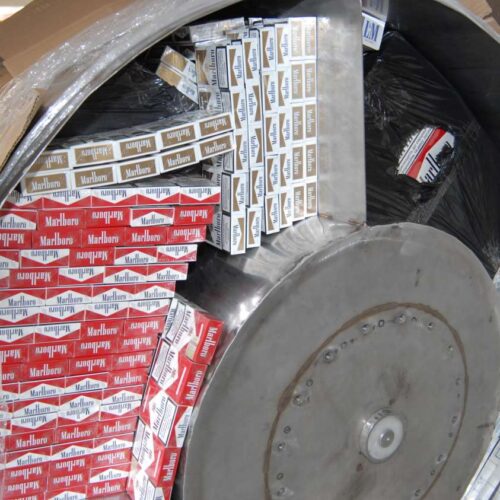Introduction
Compared with drug trafficking, cigarette smuggling is seen by organized crime groups as a low-risk, high-profit deal. No wonder then that Europol now estimates the crime costs European Union nations around $12 billion each year, and expects even more smuggling in the coming years.
In recent years, according to Europol’s 2011 Organized Crime Threat Assessment, EU nations have seen three predominant forms of cigarette smuggling: the smuggling of genuine cigarettes; the covert manufacturing and smuggling of “cheap whites”; and the sale of faked commercial brands, mainly from China and the former Soviet states.
Also, there is a robust trade – via the Baltic Sea region – of genuine low-cost cigarettes produced in Russia, Belarus, Ukraine and Moldova and targeted for western countries with high tobacco taxes.
The most popular “cheap whites” brand is Jin Ling, produced in massive quantities in Russia, Ukraine and Moldova. Jin Ling was among the brands highlighted in a 2009 series Tobacco Underground, produced by the International Consortium of Investigative Journalists. Jin Ling has captured 20 percent of Germany’s tobacco black market, Europol said.
China, the world’s leading tobacco products producer, remains the largest source of contraband tobacco. Knock-off brands of cigarettes such as Chinese-made Marlboro arrive in European Union nations via ocean transports that stop at ports, many in the United Arab Emirates, for reloading in free-trade zones.
According to Europol, the EU’s law enforcement agency, tobacco smuggling in the EU will worsen. This is because it’s now easier for clandestine and low-cost manufacturers to import raw tobacco, rather than a container of more conspicuous packaged cigarettes. This has given rise to new, illegal factories in EU states such as Poland and some Baltic States.
As a consequence, Europol warns that “cheaper and smuggled products also constitute a marked threat to EU efforts on tobacco control, and by extension the objective of reducing consumption.”
Read more in Accountability
Accountability
Few options for Obama administration in Syria
Accountability
U.S. food aid must boost nutrition for long-term recipients, adopt sturdier packaging
USAID, which fed 46 million people in 2010, sees food emergencies lengthening into multi-year programs

Join the conversation
Show Comments